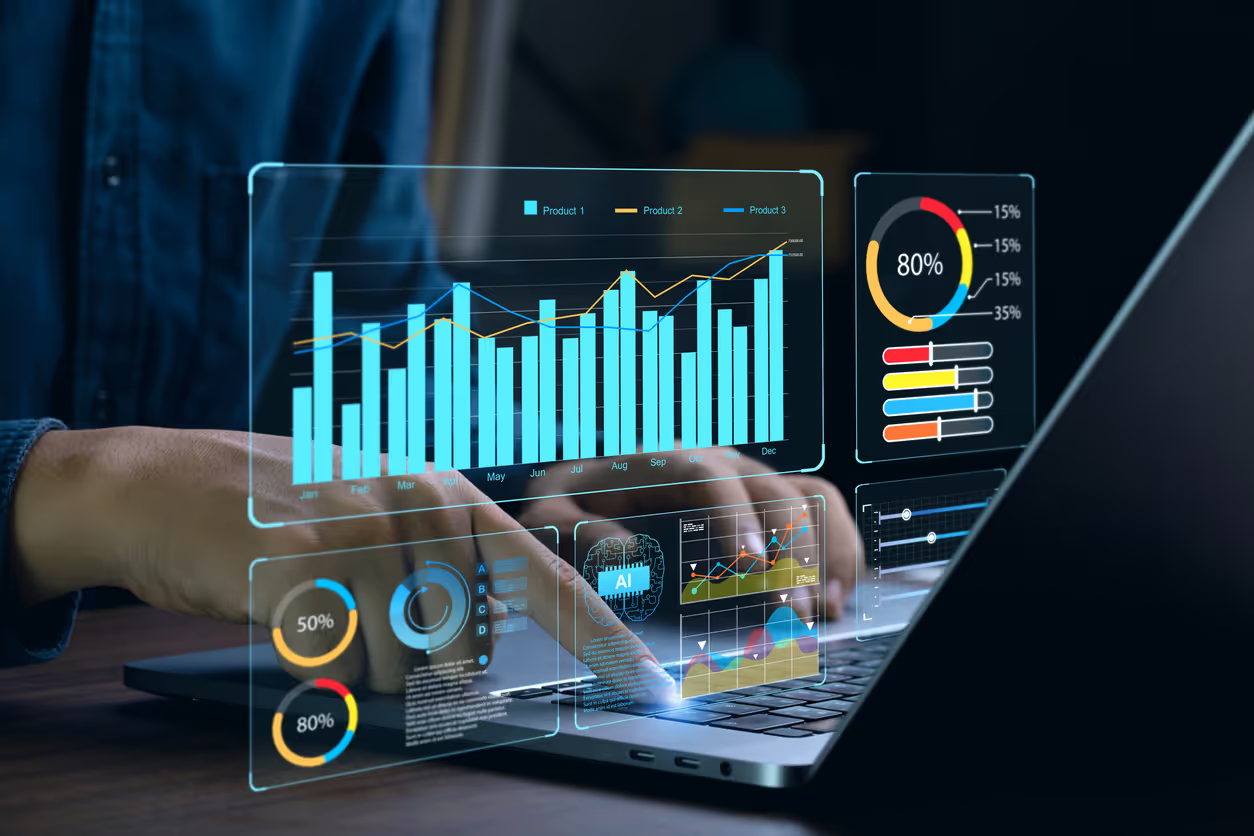Compliance Data Analytics: The Buy Versus Build Conundrum
Compliance has not traditionally been a technology-driven field, but data analytics is beginning to play an increasingly prominent role in the discipline. Companies have increased their focus on compliance data analytics in recent years. Advances in technology deliver superior insights about a company’s risk more quickly than traditional compliance processes. In the coming years, the trend will only increase.Recent updates to the United States Department of Justice guidance for corporate compliance programs have made clear that the modernization of compliance processes should be a top priority for companies. Compliance programs powered by data analytics ensure that companies can meet regulators’ expectations and stay ahead in their fight against non-compliance, such as fraud and corruption.Taking that technological leap forward can be intimidating for compliance professionals and their companies, especially when considering whether it’s best to build your company’s compliance technology from the ground up or purchase off-the-shelf software from a third party. Both choices have potential benefits and long-term implications. It is essential to consider which option is optimal for your company when taking the first steps toward modernizing your compliance program with data analytics. This article will break down the key points your company should consider when determining whether to buy or build a data-driven compliance program and the pros and cons of each option.
What is Compliance Data Analytics and Why Does It Matter?
Compliance data analytics refers to the use of technology to gather, process, and interpret compliance-related data to identify trends, assess risk, and improve decision-making. This approach helps organizations proactively detect issues such as fraud, misconduct, or policy violations—before they escalate. By analyzing case volumes, response times, employee reporting behavior, and more, compliance teams can spot red flags, demonstrate effectiveness to regulators, and continuously improve their programs. In an era where compliance expectations are rising and resources are stretched, data analytics offers a smarter, more strategic way to manage risk.
Buy vs. Build: What It Means in Compliance Analytics
When it comes to implementing compliance data analytics, organizations face a key decision: buy or build.
- Buying means adopting a third-party platform—typically a compliance case management or analytics solution—designed to deliver reporting, dashboards, alerts, and insights out of the box.
- Building refers to developing a custom, in-house solution, often involving IT, data science, and compliance working together to create dashboards, integrate systems, and manage analytics infrastructure.
Each path has its trade-offs:ConsiderationBuy (Third-Party Solution)Build (Internal Solution)CostUpfront licensing or subscription fees; usually more predictableHigh initial development cost + ongoing maintenanceTime-to-ValueFast implementation, ready-made toolsLong development cycles and testingCustomizationLimited to vendor capabilities, but configurableFully customizable to internal needsControlLess control over roadmap and data hostingFull control over features and dataExpertiseVendor brings compliance-specific insightsRelies heavily on internal knowledgeScalabilityEasily scalable and supportedScalability depends on internal resourcesChoosing between build vs. buy depends on your organization's size, risk profile, available resources, and long-term goals. Many teams ultimately choose a hybrid approach—leveraging a proven platform while building custom visualizations or integrations as needed.
Want to learn how Case IQ can help you achieve compliance with confidence?
Book a time to chat with one of our experts to learn how Case IQ's suite of tools can improve your compliance program from end to end.
Request a Demo1. What is the budget for your company’s compliance data analytics program?
The first question companies are likely to consider when weighing the build versus buy decision is which option makes the most financial sense. Let’s begin by discussing the build option. A company with the resources to build its own data analytics solution can ensure that the program functions precisely as the company needs; in other words, you won’t be paying for features that aren’t relevant to your company. However, going the build route doesn’t mean that companies will avoid having to buy software. For example, when building a data analytics compliance program from the ground up, companies will still need to buy things such as data repositories, an ETL system, a visualization engine, a workflow app, and, often, an analytics tool. These costs can quickly add up, especially considering the financial investment required to build the actual data analytics system itself.When transitioning to a data-driven compliance system, it’s critical to consider both the long-term and upfront costs. Buying off-the-shelf data analytics software offers several advantages. For starters, building a data analytics program is not a fire-and-forget affair. Compliance software that features data analytics needs to be frequently updated to meet your company’s evolving needs and ensure your company’s compliance processes continue to meet regulators’ changing expectations. Regularly updating internally built data analytics software can be a financial drain and a technical challenge. On the other hand, buying off-the-shelf software means partnering with a company dedicated to updating its products to address evolving customer needs.Purchasing off-the-shelf compliance software has upfront costs and requires paying a subscription fee, but it also ensures your company will have a dedicated support team that can answer any questions about the service, assist with implementation and configuration, and train your users. Going the build route requires your company to pay data engineers and data scientists as well as forensic compliance experts that can translate compliance risks to those data scientists. You would need to either have them on the payroll or pay third-party specialists to construct and update the software as needed. If such individuals aren’t already a part of your team, dedicating resources to building compliance software could exceed the costs of subscribing to an off-the-shelf service in the short and long term.
2. Does your company have employees with the technical skill sets needed to build and maintain a compliance data analytics program?
Developing and maintaining an effective compliance platform that features data analytics is a significant technical undertaking that requires a team of experts with specialized skill sets. It’s not just about having a data scientist on the payroll; such a program requires network security experts, analytics professionals, user interface creators, data architects, and business and forensic risk experts who can ensure the system does what the company needs. These roles are irreplaceable, and companies must consider whether they have such individuals on staff—or are willing to spend the resources to hire them or outsource part of the work—if the goal is to build a compliance data analytics program in-house.The financial cost isn’t the only consideration. Employee turnover has been on the rise across industries in the United States in recent years - the “Great Recession” that began in 2021 has made this particularly apparent - and the technology industry is notable for having an especially high turnover rate. One of the primary benefits of building compliance data analytics software in-house is that your IT team will theoretically be intimately familiar with the software. However, employee turnover means that a company is likely to lose at least some institutional knowledge about its own software due to personnel changes, and the range of internal roles described above only multiplies this risk.Buying off-the-shelf compliance data analytics software can help companies avoid these issues by partnering with a supplier that already has a cross-functional team of experts who are experienced with the product and can be held accountable. The supplier is responsible for maintaining their software and updating it with new analytics, integrations, and features without requiring your company to retain in-house experts. Furthermore, although IT teams at companies seeking to buy compliance data analytics software often express concerns about whether the buy option will increase their workload or force them to work with unfamiliar technology, effective off-the-shelf data analytics programs are designed to be user-friendly and easy to integrate into companies’ pre-existing workflows.
3. What is the scope of your company’s data analytics needs, and how will such software be used in the long-term?
Your company’s compliance needs and regulatory expectations for compliance programs will change over time. These changes will impact how you approach integrating data analytics into your compliance software, regardless of whether your company chooses to build software or buy off-the-shelf technology. In the build case, it is essential to consider future software updates and whether your software will be customizable enough to make necessary upgrades for years to come.A potential benefit for companies building their own software is that when done correctly, the company should have complete control over when and how upgrades are applied and will be able to integrate the software with the company’s other tools seamlessly. On the other hand, a high-quality compliance data analytics software should include configuration flexibility and ease of integration in the products. Companies looking to purchase data analytics solutions should also evaluate the track record and support capabilities of the vendors they consider.Whether your company builds or buys compliance data analytics software, it’s critical to have a concrete idea of your company’s compliance needs in the short and long term. On one level, this is a basic idea: Is a compliance program that has third-party transaction monitoring and automated pre-approval processes among the top priorities?However, other factors to consider might not be as immediately apparent. For example, will your system need to work on multiple operating systems, such as Windows and Mac? Will the system only be accessed via desktop machines or also used on mobile devices? What kind of visualizations will the system be able to output, and how accessible will those visualizations be for non-technical users? In what region will the system’s data be stored, and will that location cause regulatory complications?All of the questions mentioned above are important to consider, regardless of whether your company goes the build or buy route. If your company has decided to build its own compliance data analytics software, it’s crucial to have answers to these points in mind before development begins. If your company is looking to buy, a provider’s ability to satisfactorily answer those questions should be considered. Compliance data analytics providers offer free demos of their suite of services, which are invaluable to determine if a given vendor is the right match for your company.
Benefits of Buying Compliance Analytics Software
Buying compliance analytics software offers a fast, reliable path to data-driven insights—without the heavy lift of building from scratch. With a purpose-built platform, compliance teams gain access to pre-configured dashboards, reporting tools, and analytics capabilities tailored to common regulatory and investigative needs. These solutions are designed with compliance professionals in mind, enabling faster setup, less reliance on IT, and intuitive features that support real-time monitoring and decision-making.Additional benefits include:
- Speed to Insight: Get up and running quickly with ready-to-use visualizations and KPIs.
- Compliance Expertise Built In: Benefit from vendor knowledge of regulatory frameworks, reporting requirements, and industry benchmarks.
- Ongoing Support & Updates: Stay current with evolving compliance standards and technology improvements without internal maintenance burdens.
- Integrated Case Data: Seamlessly analyze investigation data, hotline reports, and incident trends in one platform.
- Scalability & Security: Rely on enterprise-grade infrastructure that meets data privacy and security standards.
For many organizations, buying compliance analytics software delivers immediate value and long-term efficiency, empowering teams to uncover risks, demonstrate program effectiveness, and continuously improve with data.
Conclusion
The benefits of bolstering your company’s compliance processes with data analytics are becoming more apparent than ever. However, it can still be challenging to determine whether it’s best to build or buy data-driven software that can meet your company’s needs.If you’re in the position that many of our experts were and would like to schedule a discussion about the options your company has to modernize its compliance programs, you can contact us here.
FAQs
1. What is a compliance data analyst?
A compliance data analyst interprets data related to compliance activities—such as investigations, audits, and employee reporting—to identify trends, assess risks, and support strategic decision-making. They help organizations turn raw data into actionable insights that improve program effectiveness.
2. What are the five key areas of compliance?
The five key areas of compliance typically include regulatory compliance, data protection and privacy, financial compliance, health and safety, and internal policies and ethics. Together, these areas ensure organizations meet legal obligations while fostering ethical behavior.
3. What are the three types of compliance?
The three main types of compliance are regulatory compliance (adhering to laws and regulations), corporate compliance (following internal policies and procedures), and contractual compliance (meeting obligations outlined in contracts or agreements).
4. Can small compliance teams benefit from buying analytics tools?
Yes. Modern compliance analytics tools are designed to be user-friendly and scalable, helping small teams gain powerful insights without needing in-house data expertise. These tools can save time, reduce manual reporting, and enhance program effectiveness.
5. What types of data should compliance analytics systems integrate with?
Compliance analytics systems should integrate with case management platforms, hotline/intake systems, HR data, audit logs, training records, and policy management tools. The more connected the data, the more complete and accurate the insights.










